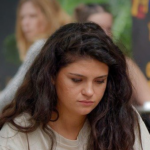How Art Reflects the Human Condition Across Different Cultures and Eras
November 18, 2024

Art has been an intrinsic part of the human experience from the dawn of civilization. Across various cultures and historical eras, art serves as a mirror reflecting the complexities, struggles, and triumphs of human existence. Whether it’s in the form of paintings, sculptures, music, or literature, artistic expression is a profound commentary on the human condition.
1. The Nature of Art and its Relation to Humanity
Art, in all its forms, is a means of communication beyond words. It expresses emotions, beliefs, and worldviews shaped by culture, history, and personal experiences. Human beings have always been moved to create and share their narratives through art, making it a universal language of humanity. Here are some basic elements highlighting the nature of art:
- Emotional Expression: Art captures the full spectrum of emotions, from joy and love to sorrow and despair. Artists express their individual and collective experiences, allowing viewers to resonate with those emotions.
- Cultural Reflection: Art serves as documentation of the societal values, struggles, and milestones at different points in history. It offers insight into the cultural identity of various groups throughout time.
- Personal and Collective Identity: Art expresses both the individual artist’s perspective and the collective identity of the society or community, enriching our understanding of different cultures.
Art is not merely an aesthetic endeavor; it is a vital aspect of humanity, promoting empathy and understanding across different cultures and eras.
2. Historical Perspectives on Art as a Reflection of Human Experience
Throughout history, art has documented pivotal moments in the human experience. Let’s explore some significant historical epochs and how art has captured the human condition:
Ancient Civilizations
The earliest forms of art, found in cave paintings like those in Lascaux, France, reveal the basic human needs of survival and the relationship with nature. Ancient Egyptian art not only recorded daily life but also served religious functions, reflecting the society’s deep beliefs in life after death.
The Renaissance
With the Renaissance’s emergence in the 14th century, art transformed into a medium celebrating humanism. Artists like Leonardo da Vinci and Michelangelo produced works that demonstrated the potential of mankind, focusing on the beauty of the human form and the intelligence of man. The art of this era reflected a renewed sense of inquiry and celebration of human achievement.
The Enlightenment and Romanticism
The Enlightenment brought forth ideals of reason and science, while Romanticism emphasized emotion and individualism. Artists like William Blake and Caspar David Friedrich used their creations to explore the depth of human emotion and the sublime in nature, portraying the struggles between man and societal constraints.
Modern Era
In the modern era, as societies underwent rapid change, art became a platform for rebellion and commentary on social issues. Movements such as Expressionism and Surrealism challenged traditional norms and expressed the alienation and existential crises prevalent in industrialized societies. Artists like Edvard Munch and Salvador Dalí used their art to delve into psychological depth and societal decay.
3. Cultural Variances in Artistic Expression
One of the most fascinating aspects of art is how it varies across cultures while still reflecting universal themes of the human condition. Let’s consider a few examples:
Asian Art
Asian art, from Chinese brush painting to Indian classical dance, often emphasizes the connection between humanity and nature, spirituality, and philosophical teachings such as Buddhism and Hinduism. The intricate details and serene themes present in these art forms reflect a deep reverence for life and the universe.
African Art
African art, often functional and communal, incorporates vibrant colors and patterns that tell stories of ancestry, spirituality, and daily life. Masks and sculptures reflect deeper meanings tied to tribal beliefs and the history of community life, signifying the importance of cultural identity.
Western Art
In Western art, the evolution from religious themes in the Middle Ages to the exploration of personal identity in contemporary works reflects broader societal changes, challenges to tradition, and shifts in philosophies. Modern artists continue to push boundaries, addressing issues like race, gender, and politics.
4. The Role of Art in Understanding Our Shared Humanity
Art is a tool for empathy. By engaging with art from different cultures and eras, individuals can transcend their personal experiences and gain insight into others’ lives. Here’s how art fosters understanding:
- Cultural Knowledge: Experiencing art from other cultures enhances knowledge and understanding of various traditions and beliefs, fostering respect and appreciation.
- Emotional Connection: Art evokes emotions that can resonate deeply, allowing viewers to connect with stories and experiences they may not have lived themselves.
- Critical Reflection: Engaging with art prompts individuals to reflect critically on their own identity, values, and societal norms, paving the way for growth and healing.
Through exhibition, literature, and performance, art acts as a bridge that links lives across time and space, creating an intricate tapestry of human experience.
5. Conclusion: The Enduring Legacy of Art in Capturing the Human Condition
Art is more than mere decoration; it encapsulates the essence of human life. From ancient cave paintings to contemporary installations, it offers a ceaseless dialogue about our existence, our struggles, and our triumphs. The beauty of art lies in its ability to connect diverse cultures and histories, expressing universal truths about what it means to be human.
As we study and appreciate art, we not only engage with history but also discover more profound insights about personal and collective identity. In a world woven together by different cultures, art remains one of the most significant mediums through which we can explore our shared human condition now and for generations to come.








